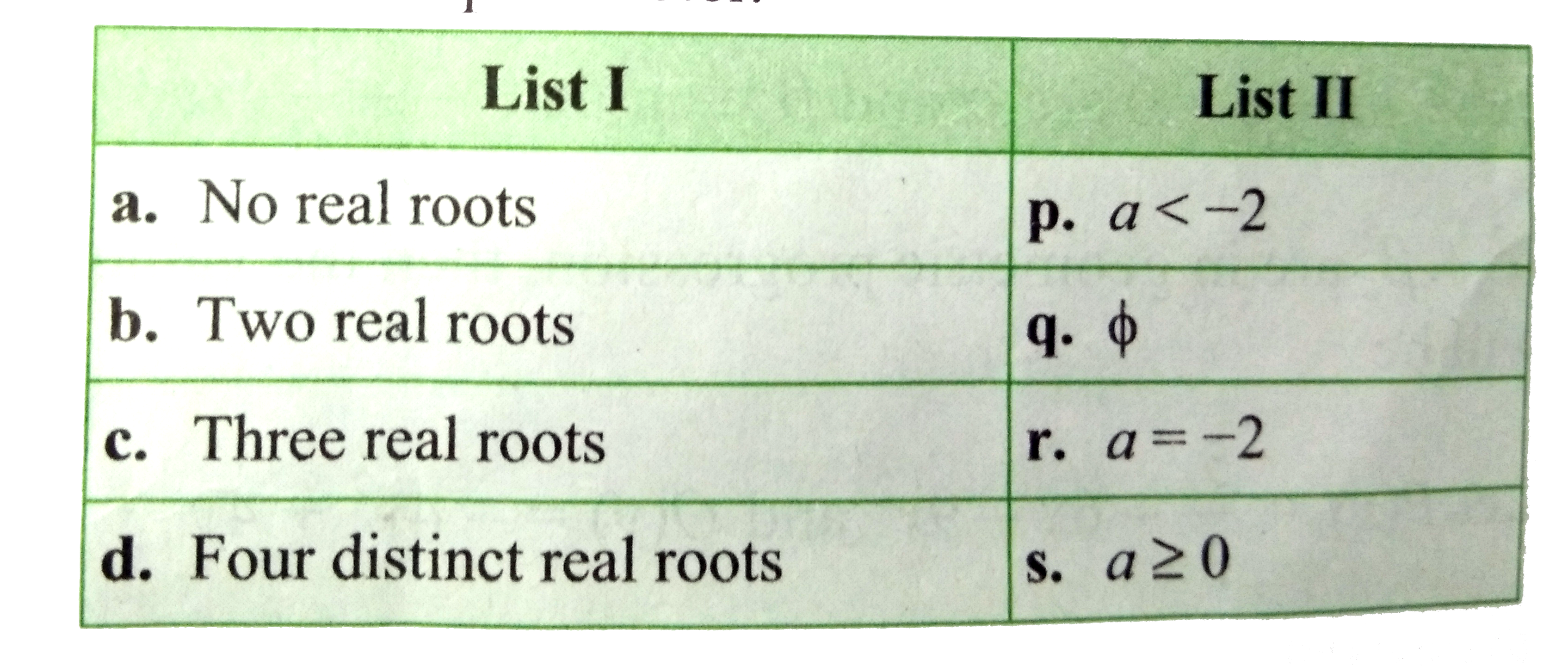If α,β are the roots of the equation ax2+bx+c=0 then the roots of the equation (a+b+c)x2−(b+2c)x+c=0 are Solution in Bengali
c
d - c
2c
0
The correct Answer is:2,4
Let f(x)=x2+ax+b. Then
x2+(2c+a)x+c2+ac+b=f(x+c)
Thus, the roots of f (x + c) = 0 will be 0, d - c .
Topper's Solved these Questions
- THEORY OF EQUATIONSBook:CENGAGE PUBLICATIONChapter:THEORY OF EQUATIONSExercise:Linked Comprechension Type
Explore 37 Videos
- THEORY OF EQUATIONSBook:CENGAGE PUBLICATIONChapter:THEORY OF EQUATIONSExercise:MATRIX MATCH TYPE
Explore 6 Videos
- THEORY OF EQUATIONSBook:CENGAGE PUBLICATIONChapter:THEORY OF EQUATIONSExercise:Single Correct Answer Type : Exercise
Explore 89 Videos
- STRAIGHT LINESBook:CENGAGE PUBLICATIONChapter:STRAIGHT LINESExercise:ARCHIVES (NUMERICAL VALUE TYPE)
Explore 1 Video
- THREE DIMENSIONAL GEOMETRYBook:CENGAGE PUBLICATIONChapter:THREE DIMENSIONAL GEOMETRYExercise:All Questions
Explore 291 Videos
Similar Questions
Consider an unknow polynomial which divided by (x−3) and (x−4) leaves remainder 2 and 1, respectively. Let R(x) be the remainder when this polynomial is divided by (x−3)(x−4).
If equations R(x)=x2+ax+1 has two distint real roots, then exhaustive values of a are.
View SolutionMatch the following for the equation x2+a|x|+1=0 where, a is a parameter.

View SolutionThe value of expression x4−8x3+18x2−8x+2 when x=2+√3
View SolutionFor a point P in the plane, let d1(P)andd2(P) be the distances of the point P from the lines x−y=0andx+y=0 respectively. The area of the region R consisting of all points P lying in the first quadrant of the plane and satisfying 2≤d1(P)+d2(P)≤4, is
View SolutionFind the angle between the line whose direction cosines are given by l+m+n=0andl2+m2−n2=0.
View SolutionIf α,β are the roots of the equation ax2+bx+c=0, then find the roots of the equation ax2−bx(x−1)+c(x−1)2=0 in term of αandβ.
View SolutionIf alpha and beta be the roots of the equation ax^(2)+bx+c=0 then equation whose roots are alpha+beta and alpha beta is
View SolutionIf alpha and beta ( alpha
View SolutionIf alpha,beta are the roots of the equation ax^(2)+bx+c=0 then the roots of the equation (a+b+c)x^(2)-(b+2c)x+c=0 are
View SolutionIf α,β are the roots of the quadratic equation x2+bx−c=0, the equation whose roots are b and c, is
View SolutionIf alpha,beta are the roots of equation ax^(2)+bx+c=0, then what are the roots of equation cx^(2)-bx+a=0
View SolutionIfαandβ are the roots of the equation ax2+bx+c=0, then what are the roots of the equation cx2+bx+a=0 ?
View SolutionIf α and β are the roots of the equation ax2+bx+c=0 then ∫(x−α)(x−β)ax2+bx+cdx=
View SolutionLet a, b,c in R and a ne 0. If alpha is a root of a^(2) x^(2) + bx + c = 0 , beta is a root of a^(2) x^(2) - bx - x = 0 and 0 lt alpha lt beta . Then the equation a^(2) x^(2) + 2 bx + 2c = 0 has a root gamma that always satisfies :
View SolutionIf α,β are the roots of the equation ax2+bx+c=0 then the roots of the equation (a+b+c)x2−(b+2c)x+c=0 are (a) c (b) d−c (c) 2c (d) 0
View Solutionयदि α,β वर्ग समीकरण x2+bx−c=0 के मूल हैं, तो वह समीकरण जिसके मूल b तथा c हैं, है
View Solution
